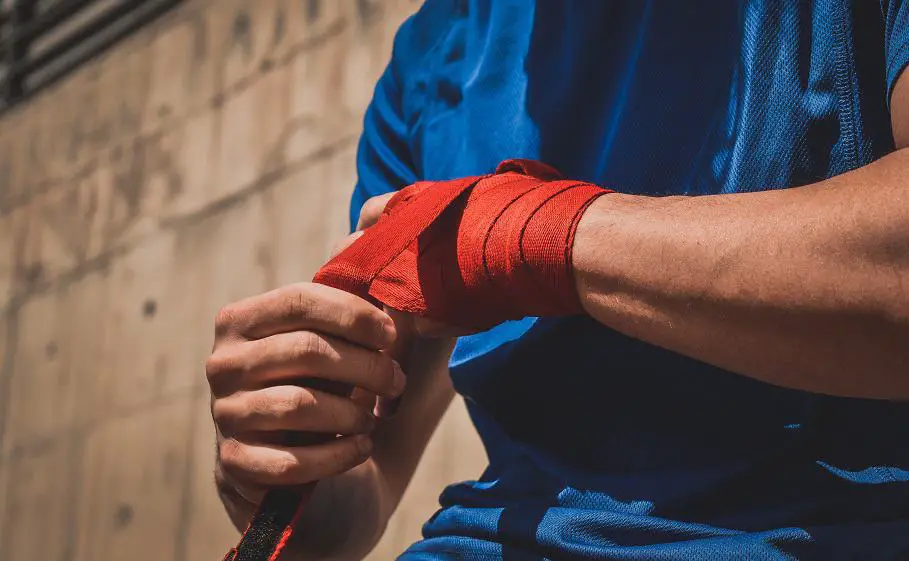Different people have different definitions of danger but as racket sports go, it would be interesting to have a look at whether squash is a dangerous sport and what are the dangers of playing squash.
First-timers and especially parents of kids have often asked me this question; what are the dangers of playing squash, and more importantly what can be done to avoid those dangers. This article is for them and for everyone else who has this question.
Much like most sports, there is a risk of injury while playing squash as well but it’s very important to understand what are those issues. Below is a list of injury potential injury problems associated with squash.
Table of Content
Eye Injuries
Eye injuries aren’t as common as some of the other injury issues associated with it or any other sport but it’s the most dangerous and more common than you think.
Squash is played with a hollow, rubber ball which, when warmed up properly, can bounce disconcertingly and at times catch you off-guard.
The other problem is the very nature of the sport means both players – or all four in case of doubles – are on the same side of the ‘net’ in squash unlike in other racket sports. Basically this implies the players are sharing the same court area while brandishing their rackets.
That is an obvious cause for concern because players can encroach on each other’s physical space and to do that while swishing one’s racket is a harmful exercise. While a mistimed and erroneous racket swing might sting the other parts of the body, a blow like that from close vicinity to one’s eye can be career-threatening at the very least.
Also Read:
Even at the highest, most competitive level, players have suffered nasty eye injuries because of the aforementioned problems.
Does that make squash dangerous? May be more than other racket sports but there are simple solutions to it which we have discussed in our piece here, Should Squash Players Wear Protective Eye-Gear?
The short answer to the above question is yes, never think of playing squash, at whichever level, without using proper protective eye-wear. Ask players like Darryl Selby and Jonathon Power and you would know why.
Some might ask if it’s still necessary to wear eye-wear if one’s wearing prescription glasses. Again, the answer is yes, because prescription glasses do not provide the kind of necessary protection and it might still break on impact.
A good option here is to use a visor like an iMask. Or talk to your eye-specialist who can recommend you specially-made glasses which can double up as prescription and protective glasses while playing squash.
Head Injuries & Concussions
Although rare, there have been cases of head injuries and concussion caused while playing squash.
One of the reasons for this has already been mentioned in the section for eye-injuries above; i.e. a ball hit or an opponent’s racket hit. However, the same issue can be caused by player collisions too.
Again, because players share the same space and because things can get competitive and heated up at times, it’s not too uncommon to see collision between players. Most of these collisions are harmless or cause minimal damage but at times it could lead to head collisions too.
Other common reason which could cause a head injury is a fall on the court, sometimes because of poor court conditions itself.
Muscle-Related Problems
One might argue this is the case with most sports. I mean, what’s sport without injuries now, isn’t it?
That is true. What is also true is that even at the beginner level, squash matches are played at some pace and if you aren’t used to it, you need to stretch your body more than it can or should.
There’s also an issue with the demand that squash puts on one side of the body and in turn, it also builds that side of the body more than the other side. This imbalance can lead to issues at some stage.
The only way to overcome this issue is to train accordingly, while practicing and while exercising but that’s something not too many players do.
If you are starting out on sport late in your life, go for a slower sport like pickleball, which is good even for seniors. Or racquetball, which has its similarities with squash but again, is a slower sport.
Also Read:
Other Issues
Some beginners who are switching sports or trying out squash for the first time having played a sport like tennis before that, opt to do that using tennis rackets for instance. While on the face of it this might look a harmless thing to do, there are short and long-term problems associated with it.
Using the heavier tennis racket can cause quicker fatigue and wrist, elbow and shoulder injury problems. We have explained those issues in depth here.
Squash is also a very vigorous sport. While that implies it has excellent and multiple health benefits, you might want to slowly get into full-fledged squash playing; begin with a few days of getting into some fitness before you get hands on in competitive squash.
According to Roland Feizo, who is the founder and coach at Roland.Fitness, squash isn’t for everyone. And he goes on to explain the issues as follows:
“There’s a dark side to squash.”
“We’ve known for a long time that people with heart disease mustn’t play squash. Heart attacks on the squash court – or soon after a game – are rare, but the sport poses a greater risk than most.”
“The problem is that men return to the game after a long break, and plunge back into extreme activity that their cardiovascular system can’t handle.”
This is not to say you can play it recreationally or train yourself obviously. However, it is very important you train for squash before you start playing it.
Do not wake up one fine day without having played too much sport beforehand, and without having exercised and just turn up to a squash court expecting to not face side-effects.
Practice squash alone for starters.
Exercise and do some squash-related drills.
Eat healthy.
And only then attempt to play squash at a break-neck level.
We had also spoken about eye injuries caused by the squash ball. It’s not just the eye which can be at the receiving end though.
The squash ball travels at a pace of around 250 km/hr at times and at that speed it’s easy to damage some bone – shins, knees, rib-cage and parts of hands are all at risk because of that.
Conclusion
Is squash a dangerous game? It’s hard to categorize squash as a dangerous sport, but to put it differently, it’s not the easiest racket sport in terms of the requirements of skill and fitness.
We encourage most people to give it a shot because, boy, does squash have some amazing health benefits (mentioned here). However, ensure to remember the aforementioned list of issues which can be caused due to squash. In doing so, you would also be able to take precautions and ensure you can keep most of the problems at bay as a result.


